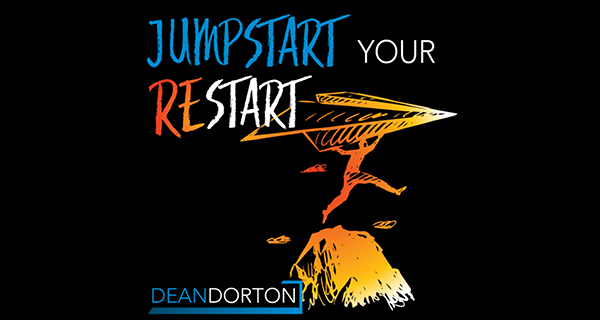Episode 5
PGlmcmFtZSBzdHlsZT0iYm9yZGVyOiBub25lIiBzcmM9Ii8vaHRtbDUtcGxheWVyLmxpYnN5bi5jb20vZW1iZWQvZXBpc29kZS9pZC8xNDM4NzczNS9oZWlnaHQvMzYwL3RoZW1lL2xlZ2FjeS90aHVtYm5haWwveWVzL2RpcmVjdGlvbi9iYWNrd2FyZC8iIGhlaWdodD0iMzYwIiB3aWR0aD0iMTAwJSIgc2Nyb2xsaW5nPSJubyIgIGFsbG93ZnVsbHNjcmVlbiB3ZWJraXRhbGxvd2Z1bGxzY3JlZW4gbW96YWxsb3dmdWxsc2NyZWVuIG9hbGxvd2Z1bGxzY3JlZW4gbXNhbGxvd2Z1bGxzY3JlZW4+PC9pZnJhbWU+
Don’t miss out on new episodes from Dean Dorton! Listen and subscribe:
https://deandorton.com/wp-content/uploads/2020/04/Icon_Apple-Podcast-300×300.pnghttps://deandorton.com/wp-content/uploads/2020/04/Icon_Spotify-1-300×300.pnghttps://deandorton.com/wp-content/uploads/2020/04/Icon_Google-Play-Music.pnghttps://deandorton.com/wp-content/uploads/2020/04/Icon_SoundCloud-300×300.pnghttps://deandorton.com/wp-content/uploads/2020/04/Icon_Stitcher-1-300×300.pnghttps://deandorton.com/wp-content/uploads/2020/04/Icon_Deezer-300×300.png
Transcription
Jason Miller:
Welcome back! In our last episode we discussed topics for you to consider that can help your organization be more disaster-ready in the future. One of the key takeaways I tried to impart upon you was the importance of preparing your organization to be nimbler by becoming an organization that embraces change.
As we discussed, humans are often resistant to change. However, I contend that an organization’s ability to change quickly and efficiently will be one of the greatest attributes of a successful company. If you’ve ever read any of Jim Collin’s books, you will know that organizations who move from good to great have strong leaders and the leaders are not satisfied to rest on past successes. They recognize that they may need to adapt business models or make certain changes to remain relevant and to be a great company.
Technology is driving change at a record pace. As we saw during the early response to COVID-19, the government quickly rolled out guidance on sheltering in place. Organizations who had already embraced forward-thinking technology solutions adapted better than those organizations that have been resistant to leveraging technology.
Today, I am joined by Polina Nikolova. Polina is a Manager in the Dean Dorton Technology Consulting group. She helps our clients manage their technology investments on an ongoing basis and often helps organizations transition from their old technology to newer, more modern solutions.
Polina and her team were on the front lines with our clients helping them shift their workforces to a remote environment.
Polina, can you share with us what you and your team saw during the rush to work remotely.
Polina Nikolova:
Thanks, Jason; I’m excited to be here. As you mentioned, many of our clients had an easier time at this than others. We found that our clients who had already invested in some key technologies were able to more easily mobilize than those who had not. Those who had not properly invested in technology really had to scramble and the solutions to help them with a quick turnaround were not always ideal, but many did the best with what they had.
Jason:
So, having gone through this, do you have a greater appreciation for some technologies than others? What I mean by that, are there any technologies that you will be encouraging our clients to focus on, either now or as we come out of the current pandemic state?
Polina:
That’s an interesting question. There are really a number of key technology solutions that we believe organizations need to be considering now and into the future. I would break them into two key categories: the first category is cloud-based solutions, which includes infrastructure and software solutions, and the second is communication and collaboration platforms.
Jason:
Let’s start with the cloud-based Infrastructure. Tell us a little more about what you mean by that, what solutions you recommend, and maybe a little bit about their key benefits.
Polina:
For many years, we’ve been helping businesses move from onsite hardware and servers to cloud-based infrastructure or servers with Amazon AWS or Microsoft Azure. This allows our clients to become less reliant on physical locations and hardware that tends to fail. Another component to this is virtualizing the user’s desktop through solutions like Microsoft Remote Desktop Services, Citrix XenDesktop, or VMWare Horizon View. These solutions allow users to securely and easily access all your critical business systems and data from any device, any time, and anywhere. Clients who had these solutions in place were much more prepared for the COVID-19 situation.
More recently, we’ve been working with clients to push the envelope of their traditional experience of big file servers and leverage more modern storage and file sharing with solutions like Microsoft SharePoint or other cloud-based file sharing solutions. Clients often couple this concept with many other cloud-based software tools and solutions to provide the full business functionality needed for their organization.
Jason:
We spend a lot of time promoting cloud-based accounting and ERP solutions for our clients. Can you share any experience or examples of how these solutions benefited our clients vs. organizations who may still be on a traditional client-server setup and didn’t have any of the cloud-based infrastructure you mentioned?
Polina:
Yes; as we have discussed, many clients had to mobilize their entire workforce in a short period of time, including us at Dean Dorton. I am going to reference some discussions I had with our Accounting and Financial Outsourcing group that helps paint the picture well. Our AFO group has been moving to a fully cloud and automated technology stack for providing outsourced or co-sourced accounting services to our clients. By technology stack, I mean Sage Intacct for accounting, Bill.com for payment automation, and Expensify for credit card and employee expense reimbursement.
For a number of years now, any new client brought into the firm for those services has been required to adopt this modern platform. However, we still have a number of legacy clients that have not been moved to this modern solution set. Our modern AFO team was able to pick up their laptops and monitors and head home and began working immediately with little to no interruption. Our team that supports our legacy clients struggled greatly. They needed printers, they needed checks, they had to figure out how to get paper invoices from our office or the client’s, they had to figure out how to get checks signed. It was much more disorganized and inefficient. Our modern AFO clients appreciate the preparedness our solutions provided them in this situation.
Jason:
I have heard this pandemic has helped convince some clients who were previously resistant to change move to the new platform. Now let’s talk a little bit about your second category, communication and collaboration. Tell us what you are thinking when you reference collaboration and communication.
Polina:
Traditionally, I would have meant phones and emails. Now, we look at that on a broader scale to include phones, chat, email, virtual meetings, and video conferencing solutions. At Dean Dorton we primarily leverage the Cisco Collaboration platform. Our Technology Consulting group helps many of our clients leverage the Cisco platform too. We work with many different technology platforms and tools, but we prefer the Cisco suite.
Jason:
Why do you say we prefer the Cisco Suite? There are lots of options out there and new ones are popping up every day.
Polina:
You’re right, there are a lot of great solutions out there, but we have found the Cisco suite provides a much more integrated solution, providing ease of use and greater functionality.
Jason:
What exactly does that mean?
Polina:
Cisco offers a cloud-based phone solution that allows our clients to provide business phones to multiple office locations and remote workers. It even allows team members to have more flexibility. They can have a single extension in multiple locations, shared office or hoteling setups can help the user to log into their phone at any office location or desk. It also allows them to extend their business phone to software phones on their PC or apps on their smart-phone.
Next, we leverage the Cisco Webex platform. Webex offers Meetings, Event Center, and Training Center. Users can host their own private team meetings, host webinars to educate and share important information with clients and prospects, or training sessions with large group time and smaller break-out sessions. Another great feature is robust video conference rooms; while it may be a while before we are back in the office and the conference rooms are full, during normal business operations, we integrate Webex with our high-tech training and conference rooms for video conferencing. This has been very important for Dean Dorton, an organization with many offices and many remote workers. We can bring teams together, no matter where they’re working on any given day.
Next, Webex has one of my favorite tools, Webex Teams. Teams has allowed our team members to stay in constant communication leveraging individual chat and project/team chat rooms. The collaboration capability helps us serve clients better than ever. Teams also offers a flexible API—application programming interface—to allow us to connect teams to other solutions we use like our helpdesk ticketing system. This provides a greater efficiency for our team.
Jason:
What are some other tools or collaboration solutions that you have helped clients leverage?
Polina:
I mentioned SharePoint earlier. SharePoint is a component of Microsoft Office365. Office365 provides some great collaboration features as well. The ability for users to share information and communicate anytime and anywhere is huge in today’s current environment. I believe those organizations who were slow to adopt technology solutions, but quickly embraced them to survive the rush to work remote, will have a tough time going back to the old way of doing things.
Jason:
Let me shift your attention just a little. I would be remiss if I didn’t bring up the topic of cybersecurity. We have talked a lot about adding new technology and making our organizations more reliant of these platforms. Should leadership be concerned about the increased cyber risk that is being introduced to their employees, customers, patients, or constituents?
Polina:
Absolutely. Cybersecurity has to be considered by every organization and must be part of every technology project that changes how and where users store and access critical business information. We’ve seen an increase in the number of cyber incidents since the pandemic started, not that there weren’t already a lot of cyber-attacks going on before, but it highlights two things: One, the threat-actors are as active as ever and prey upon an organization’s lack of focus on cybersecurity. Two, many organizations became more vulnerable in their rush to work remote. We need to evaluate what new vulnerabilities we introduced now and work to minimize the long-term impact this can have on our organization.
Every organization, no matter the size, needs to have a formal cybersecurity program in place. A program that proactively manages cyber-risk and provides for continual improvement in an organization’s cyber-maturity.
Jason:
Thank you, Polina. You’ve shared some very valuable information for our listeners. The organization of the future needs to be nimbler and accepting of change. Technology is offering us new ways to conduct business and prepare for unexpected interruptions. However, it is not a one-time event. Embracing technology also requires us to embrace continual change.
To our listeners, thank you for joining us. We hope we have challenged and inspired you to consider how you will help your organization prepare for your New Normal and future success by creating a culture that embraces technology and change. Join us next week for our next episode, and in the meantime, best wishes and good luck as you prepare to jumpstart your restart.
Your Host
Guest








